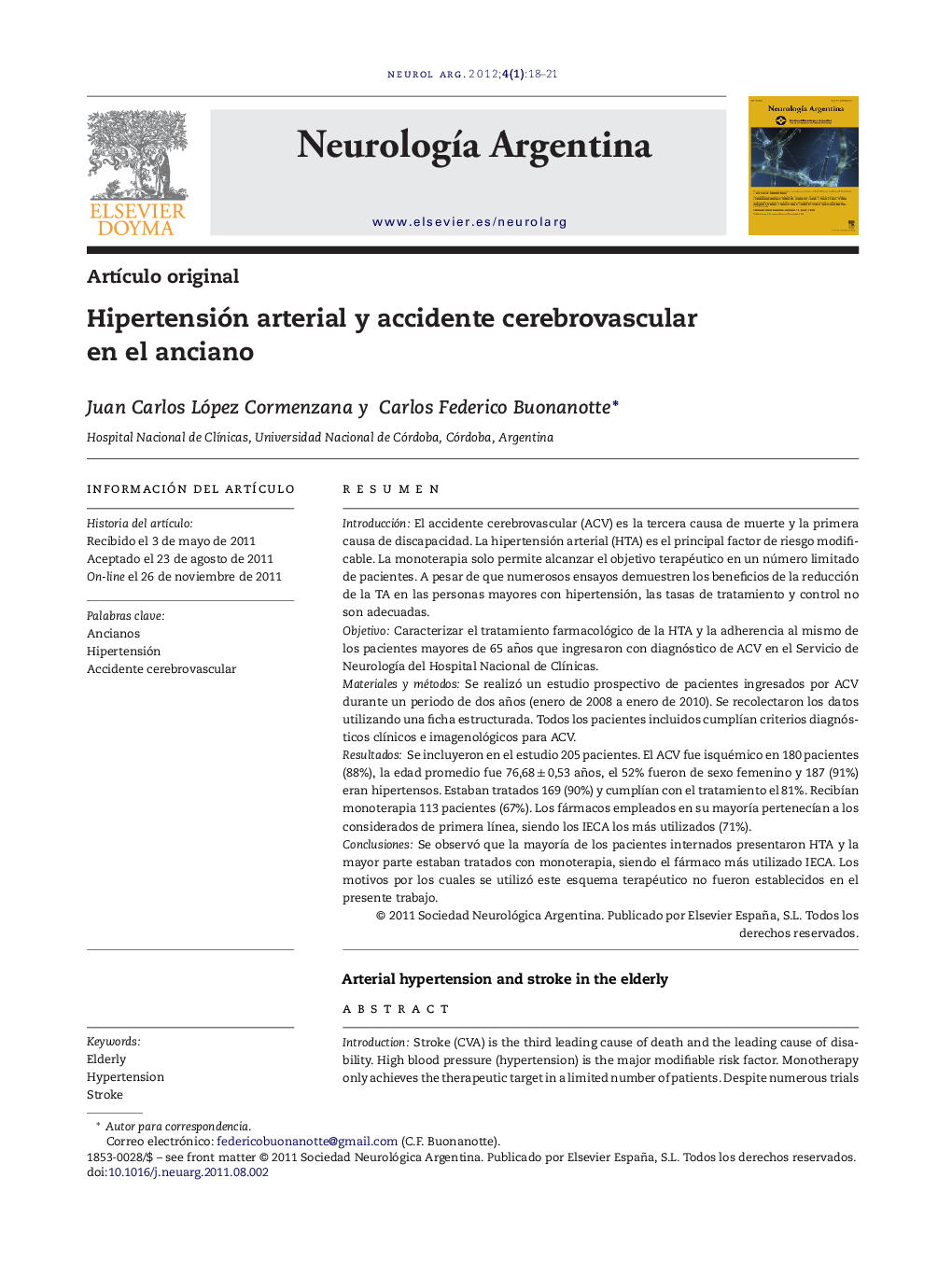| Article ID | Journal | Published Year | Pages | File Type |
|---|---|---|---|---|
| 3076711 | Neurología Argentina | 2012 | 4 Pages |
ResumenIntroducciónEl accidente cerebrovascular (ACV) es la tercera causa de muerte y la primera causa de discapacidad. La hipertensión arterial (HTA) es el principal factor de riesgo modificable. La monoterapia solo permite alcanzar el objetivo terapéutico en un número limitado de pacientes. A pesar de que numerosos ensayos demuestren los beneficios de la reducción de la TA en las personas mayores con hipertensión, las tasas de tratamiento y control no son adecuadas.ObjetivoCaracterizar el tratamiento farmacológico de la HTA y la adherencia al mismo de los pacientes mayores de 65 años que ingresaron con diagnóstico de ACV en el Servicio de Neurología del Hospital Nacional de Clínicas.Materiales y métodosSe realizó un estudio prospectivo de pacientes ingresados por ACV durante un periodo de dos años (enero de 2008 a enero de 2010). Se recolectaron los datos utilizando una ficha estructurada. Todos los pacientes incluidos cumplían criterios diagnósticos clínicos e imagenológicos para ACV.ResultadosSe incluyeron en el estudio 205 pacientes. El ACV fue isquémico en 180 pacientes (88%), la edad promedio fue 76,68 ± 0,53 años, el 52% fueron de sexo femenino y 187 (91%) eran hipertensos. Estaban tratados 169 (90%) y cumplían con el tratamiento el 81%. Recibían monoterapia 113 pacientes (67%). Los fármacos empleados en su mayoría pertenecían a los considerados de primera línea, siendo los IECA los más utilizados (71%).ConclusionesSe observó que la mayoría de los pacientes internados presentaron HTA y la mayor parte estaban tratados con monoterapia, siendo el fármaco más utilizado IECA. Los motivos por los cuales se utilizó este esquema terapéutico no fueron establecidos en el presente trabajo.
IntroductionStroke (CVA) is the third leading cause of death and the leading cause of disability. High blood pressure (hypertension) is the major modifiable risk factor. Monotherapy only achieves the therapeutic target in a limited number of patients. Despite numerous trials demonstrating the benefits of lowering BP in older people with hypertension, treatment and control rates are not adequate.ObjectiveTo characterize the pharmacological treatment of hypertension and adherence of patients over 65 years admitted with a diagnosis of stroke in the Neurology Department of the National Clinical Hospital.Materials and methodsA prospective study of patients admitted for stroke during a period of two years (January 2008 to January 2010). Data were collected using a structured form. All patients met clinical and imaging diagnostic criteria for stroke.ResultsThe study included 205 patients. The stroke was ischemic in 180 patients (88%), the average age was 76.68 ± 0.53 years, 52% were female, 187 (91%) were hypertensive. 169 were treated (90%) and 81% adhered to the same. 113 patients received monotherapy (67%). The drugs used were mostly considered belonging to the first line, being the most commonly used ACE inhibitors (71%).ConclusionsWe found that the majority of inpatients had hypertension and most were treated with monotherapy, been ACE inhibitors the drug most commonly used. The reasons for this therapeutic regimen been used were not established in this work.
